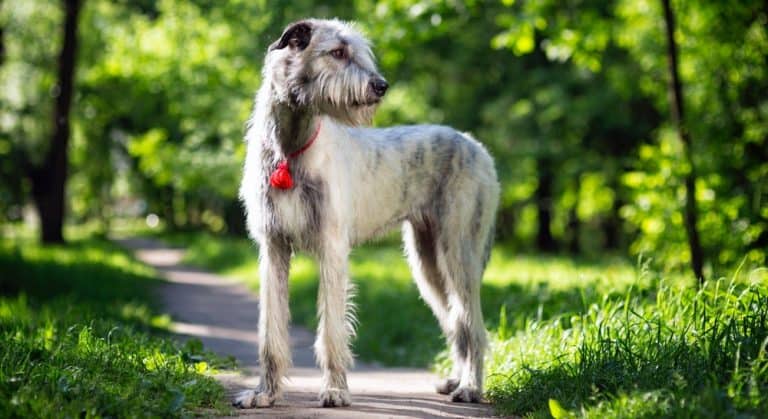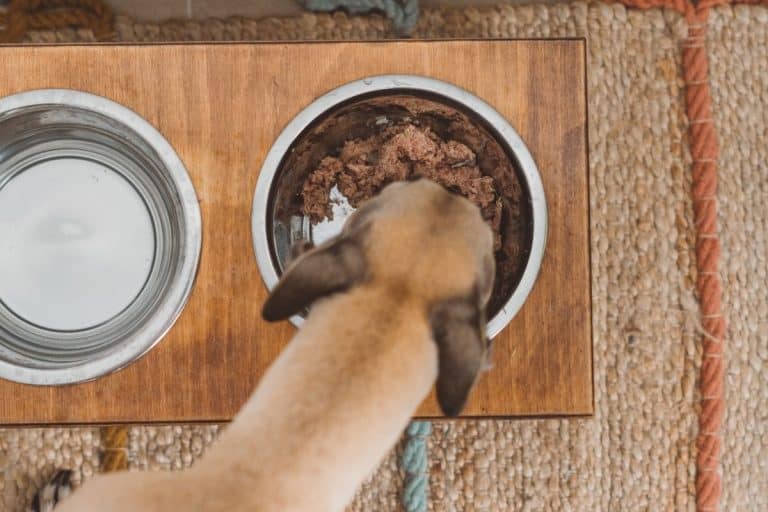Great Pyrenees Growth Chart – Weight & Size Chart
Whether you have just adopted or are planning on adopting a Great Pyrenees dog, you will want to use a Great Pyrenees growth chart to help you keep track of your dog’s growth and development.
The charts help you determine how large your dog should be once he is done growing. Following a growth chart is an excellent way to ensure your dog is as healthy as he should be.
We have broken down everything you need to know about a growing Great Pyrenees to help you out. This is what you will want to know.
When Do Great Pyrenees Stop Growing?
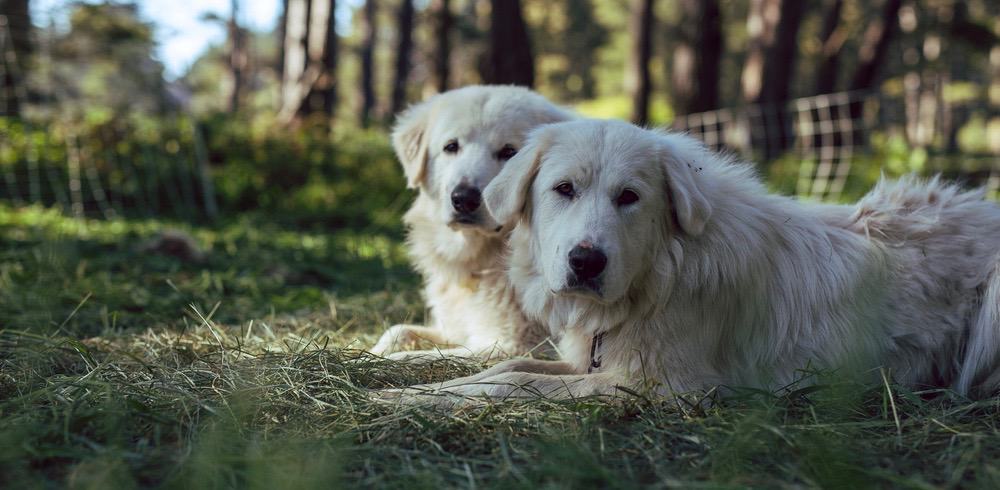
A common question is when do Great Pyrenees stop growing. After all, they are large dogs, so you might be wondering. By the time your dog reaches his first birthday, he should be about his full height.
He is likely to continue to gain weight and to fill out all the way up to 18 – 24 months, but the bulk of his growth should happen before his first birthday.
It is best to follow a growth chart to ensure that your dog is growing at a healthy rate. If you have any concerns, talk to your vet.
Great Pyrenees Growth Chart
We have built a growth chart for your Great Pyrenees to help guide you through your pup’s development. It is important to note that male and female dogs are not the same size.
Female dogs are generally smaller than male dogs, so you cannot use the same Great Pyrenees growth chart for them.
For example, if your female pup is 30 pounds at the age of 3 months, you can expect her to weigh about 63 pounds when she is 7 months.
Likewise, a male puppy who is 37 pounds at 3 months will likely weigh 77 pounds at the age of 7 months. Using these estimates can help you determine whether your dog is growing at the right weight for his size.
Using the Great Pyrenees weight chart, you can line up the dog’s age by month with how much they should weigh.
Great Pyrenees Weight Chart
Keep in mind that these are average weights for Great Pyrenees puppies into adulthood. Actual growth rates may vary based on genetics, diet, exercise, and other factors. It’s important to consult with your veterinarian to ensure your puppy is growing and developing properly.
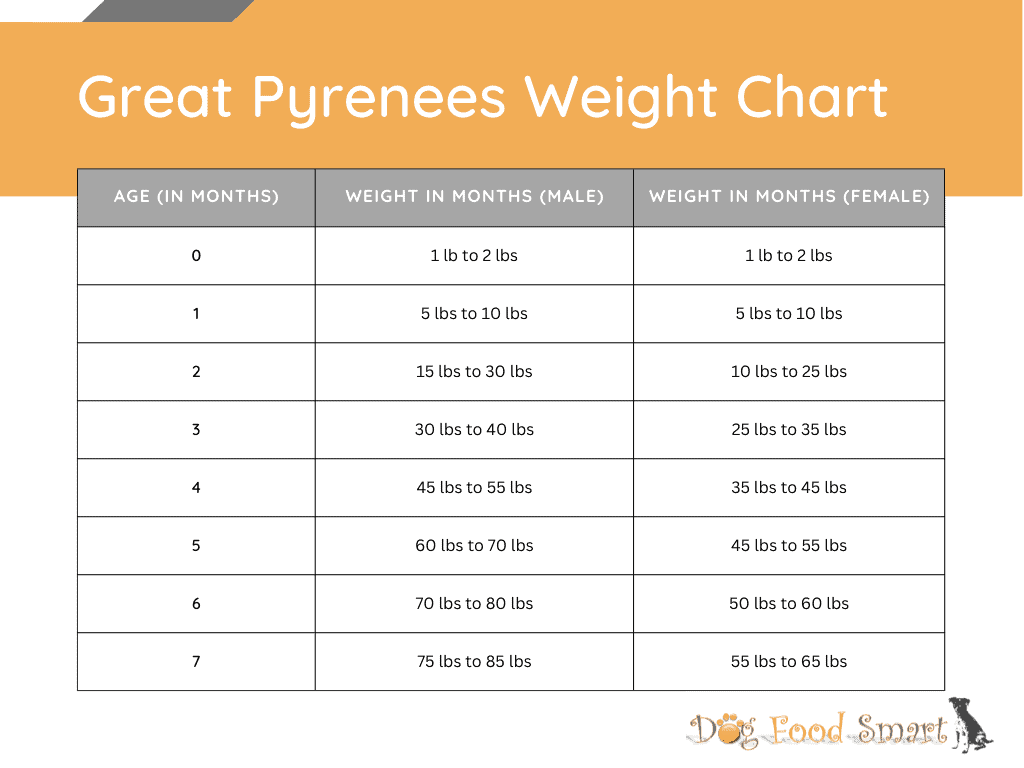
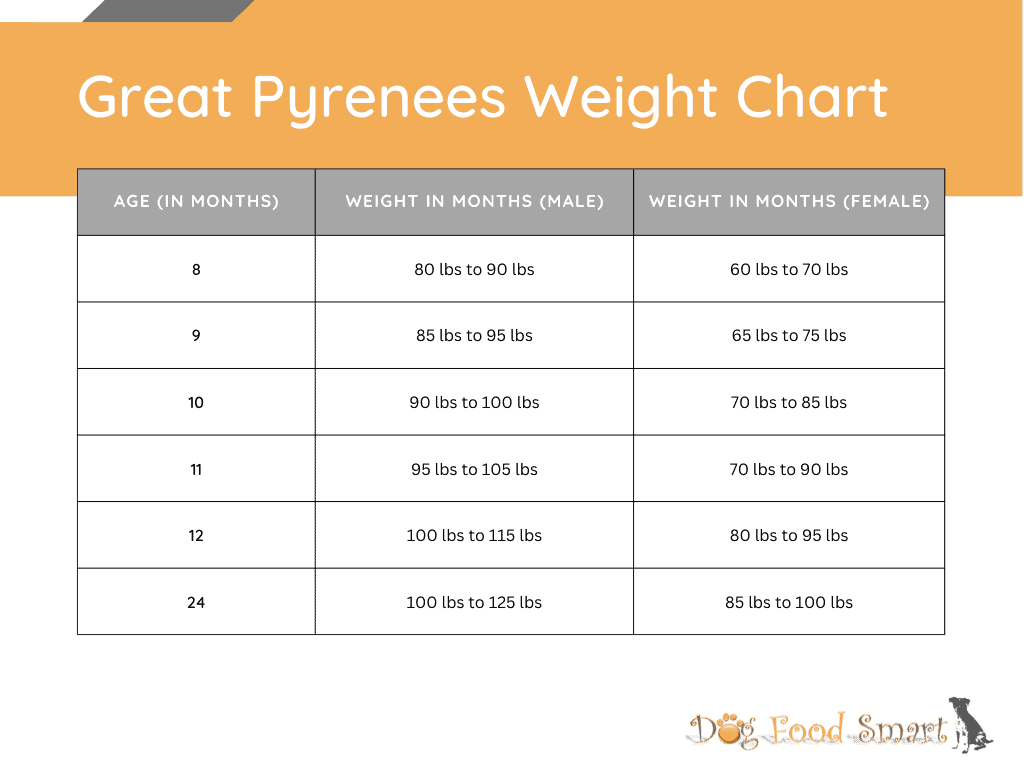
Great Pyrenees Growth Stages – What To Expect
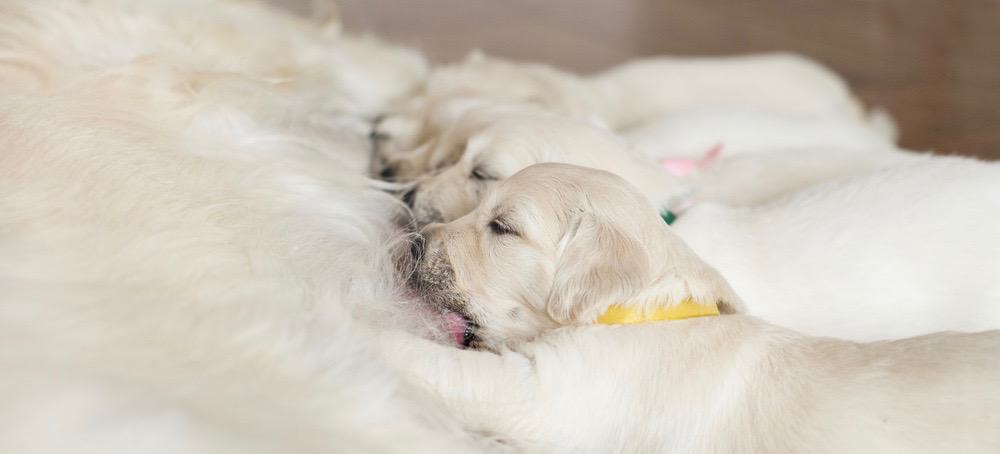
Birth – 2 Weeks
On average, a Great Pyrenees puppy weighs around a pound at birth. They grow quickly; within a week, they should be up to 2 pounds. At 2 weeks, they should already be up to 3 pounds.
Typically, large breed dogs will gain weight quickly, and you should not be surprised to see some seriously rapid growth right away. They will still be on mother’s milk at this age.
3 Weeks – 12 Weeks
By 3 weeks of age, your puppy should weigh around 4 pounds. By the time he is 12 weeks of age, you can expect your dog to weigh between 30 and 40 pounds.
They should be gaining around 2.5 pounds a week, but that will vary depending on the dog and whether you have a male or female Great Pyrenees. The rapid growth might be surprising, but remember that these are large dogs.
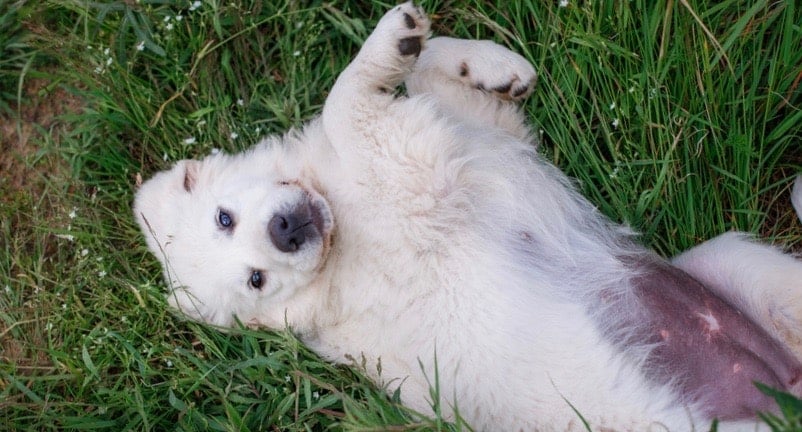
4 Months – 6 Months
When your puppy has reached 4 months of age, he should weigh between 35 and 55 pounds, depending on whether your dog is a male or female and whether he is predisposed to being a smaller or larger dog. By 6 months, he should be between 50 and 80 pounds.
You should notice that the range is getting broader between averages as your pup grows, but as long as he’s on his curve, that is ok.
7 Months – 12 Months
Your dog should be a lot bigger when he is 7 months old. The range for a 7-month-old puppy is between 75 and 85 pounds for a male and an average of 55 to 65 pounds for a female Great Pyrenees. The dog is not quite fully grown, but he is definitely getting bigger.
By a year of age, his weight will be slowing down. The range at a year is 80 to 95 pounds for a male and 85 to 100 pounds for a grown female. Even then, this is unlikely to be your dog’s final weight.
Adult
The final adult weight of your dog should be set between 18 and 24 months. Great Pyrenees can be between 85 and 125 pounds as a final weight, but those are just averages.
He might be larger or smaller depending on what he is naturally prone to being weight-wise. You do not want to allow your dog to get any bigger than his growth curve because too much weight can be unhealthy for his joints.
Many Great Pyrenees pups will reach their full grown height by their first birthday but will continue gaining weight and building muscles for several months after their birthday.
Is the Great Pyrenees a Large or Giant Breed?
Now that you know how big your Great Pyrenees can get, you might wonder if they are classified as a large dog breed or a giant breed. They are actually a large to giant dog breed, but this really depends on their estimated size when fully grown.
Since they are such big dogs, they need a lot of space to live in and would love a big backyard to play in.
At What Age Does the Great Pyrenees Dog Start Guarding?
The Great Pyrenees will start becoming more vocal around six months of age but won’t really start guarding and protecting until around 18 months of age. This is when their bodies are fully developed, and they can handle more.
Guarding is what this dog breed does naturally, but they do it when they gain the physical and mental maturity to become more effective guardians.

How Big Do Great Pyrenees Get?
As a Great Pyrenees owner, you may wonder how big your puppy will get as an adult. There are ways to know the adult size of your puppy, such as looking at the paws, parents and doing a DNA test.
Your breeder can give you information about the size of your puppy’s parents, and you can estimate how big your puppy will get when they are fully grown.
Looking at the paws is another way of estimating your puppy’s adult size. If they are big, the chances of your puppy being a larger dog are high.
Finally, a DNA test can predict the size of your puppy by giving information about the size of your puppy’s parents and relatives.
On average, adult female Great Pyrenees weigh between 85 and 115 pounds with a height of around 25 to 29 inches, while their male counterparts weigh between 100 and 160 pounds with a height of about 27 to 32 inches.
Will Neutering/Spaying Affect My Great Pyrenees Growth?
If you have recently bought a Great Pyrenees, one of the main decisions that you need to make is whether to neuter or spay them.
Neutering or spaying is a simple and harmless procedure where the vet removes the testicles of male dogs or the ovaries and uterus of female dogs.
Getting your Great Pyrenees neutered or spayed is a great health decision because your puppy is protected from certain health conditions such as testicular or ovarian cancer. Also, your puppy will stay home and not wander around the neighborhood.
Spaying or neutering should be done when your puppy is between 6 and 10 months old.
If done earlier than 6 months, your puppy’s growth can be affected because the growth plates are not fully closed, and growth hormones work together with reproductive hormones.
Does the Great Pyrenees Experience Growing Pains?
Around six to ten months of age, the Great Pyrenees can suffer from inflammation of the long bones in their legs. This condition can become painful. It is known as eosinophilic panosteitis.
The pain from this condition can switch back and forth between their legs. Growing pains are more often seen in large dog breeds and can turn into self-limiting and acute lameness or other developmental diseases.
Great Pyrenees Size Chart
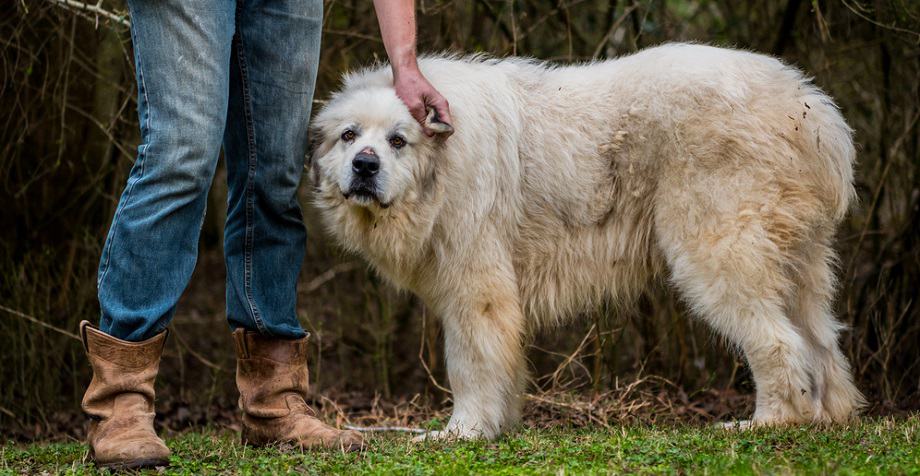
The height of a Great Pyrenees is measured from the ground to the highest point between the shoulder blades, the withers.
Let your Great Pyrenees stand against a wall, ensure they are straight, and find their withers. Measure from the ground to the withers using a tape measure. This is your puppy’s height.
On average, the height of female Great Pyrenees is between 25 and 29 inches, while male Great Pyrenees stands at a height of between 27 and 32 inches.
How To Properly Weigh And Measure A Great Pyrenees
Measuring your Great Pyrenees weight will help you ensure that they maintain a healthy weight throughout their life.
You should measure your puppy’s weight every six months, but if they have an illness, weighing them every three months is recommended.
It is best to weigh your Great Pyrenees at home because of their size, but if you can lift them, you can weigh them at home using a bathroom scale. First, step on the scale and record your weight.
Secondly, pick your puppy, step on the scale, and record the number. Finally, subtract the weight of the first step from the weight of the second step. This is your puppy’s weight.
Maremma vs Great Pyrenees Size
The Great Pyrenees is heavier and taller than the Maremma. On average, the Great Pyrenees weighs between 85 and 160 pounds with a height of between 25 and 32 inches.
Meanwhile, the Maremma weighs between 66 and 100 pounds with a height of between 25 and 29 inches.
What Is A Great Pyrenees Neck Size?
The main reason for measuring your Great Pyrenees neck is to know the correct size of their collar. Use a measuring tape that is soft to find your puppy’s neck size.
Circle the tape measure around the thickest part of your puppy’s neck and slide two fingers in the gap to ensure that the collar will fit comfortably and securely. The measurement is your puppy’s neck size.
On average, the neck size of a Great Pyrenees is between 24 and 30 inches.
Great Pyrenees Body Condition Score (BCS)
Veterinarians use the Body Condition Score to evaluate the fat level of dogs to formulate an exercise plan and diet that suit your puppy’s activity level, body, and lifestyle. The two scales of BCS are 1-5 and 1-9.
The ideal BCS of a Great Pyrenees with a healthy weight is 3/5 or 5/9. This is when you can feel your puppy’s ribs through a thin layer of fat with your fingers.
This also means you can see the tummy tuck from the side and the waistline from above.
How To Help Your Great Pyrenees Lose Weight If He Is Overweight
If your Great Pyrenees is overweight, you should be concerned because excess weight can lead to health conditions such as heart disease, diabetes, and hip dysplasia. The good news is you can help your puppy to lose weight at home through the following steps:
- Reduce caloric intake
- Increase the amount of physical activity
- Reduce treats or replace them with fruits and vegetables
- Feed them healthy and high-quality foods
Underweight Dogs: What to Watch For
Underweight dogs can be due to various reasons, including hereditary, illness, and improper nutrition. It can be difficult at times to determine if your dog is overweight or underweight just by looking at them. Since these dogs are naturally large in size, it makes it even harder to determine.
If your Great Pyrenees is recovering from an illness, it may be harder for them to gain weight. Or you may need to change the dog food you give them, so they get the proper nutrition they need. Here are a few ways to tell if your adult dog is underweight:
Touch Method: If the dog is underweight, you might be able to feel his ribs and hip bones when you gently press against their coat. There will be lost muscle mass and fat loss.
Sight Method: When you look at your Great Pyrenees from the side, you might see an abdominal tuck if they are underweight. When looking down at the pup from the top, you might make out more of an hourglass figure.
Soak Method: Since this dog breed has a longer and thicker coat, some of these methods may be harder to use. So, try the soak method. Soak your dog’s fur to reduce its volume, and then examine the dog’s figure.
What If My Great Pyrenees Is Not The Right Weight?
If you are concerned that your dog isn’t the right weight, there are a few things to consider. The first is whether your dog is still on his growth curve if he is still growing. While our Great Pyrenees size chart is an excellent guide, it is not perfect.
That said, there are some things that you can watch for. Great Pyrenees are fluffy and furry, so it might be harder to identify a waist.
Normally, you look for a defined waist with a dog, but with a fluffy dog, you will want to look at his haunches. Can you see a waist raise in the back? If there is any hanging, you might have an overweight dog.
If your dog is overweight, which you should confirm with your vet, you will need to figure out a better activity level and confirm that your dog is eating the right amount of food.
Factors That Affect Great Pyrenees Puppy Growth
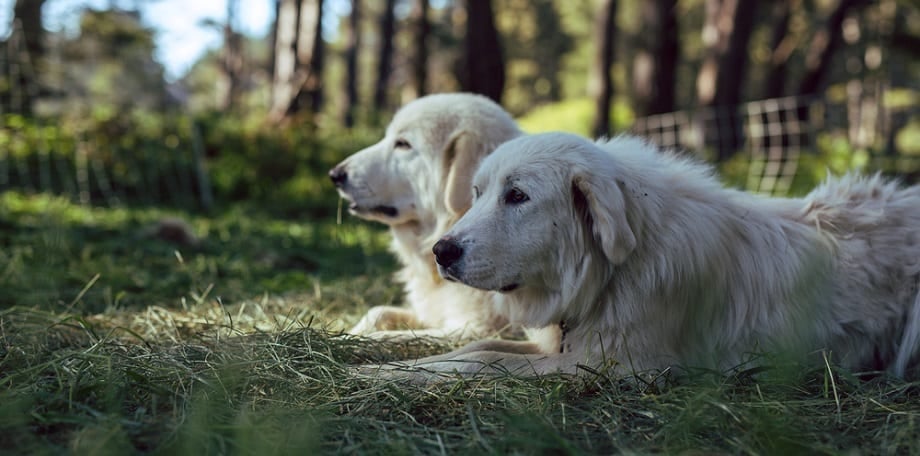
Genetics
Genetics will help determine how big your dog will be. While he will inevitably be a large dog, how large he is will vary.
There is no correct size with a Great Pyrenees, but there are averages that will be able to help you determine the right size for your dog. Genetics will determine this for you. No matter what kind of food you feed your dog, you will still be unable to beat out his genetics.
Nutrition
Nutrition will definitely affect your puppy’s growth. You will want to ensure that you are feeding your dog quality puppy food to make sure that he will grow as well as he should be growing.
Feeding your dog too much will not make him taller, but it will put too much pressure on his joints and put him at a bigger risk of hip dysplasia. It is important to make sure that your dog is growing at an appropriate rate.
Physical Activity & Health
You will want to make sure that your dog is getting enough exercise while he is a puppy to ensure that he will grow to be as muscular as you want him to be.
You do not want to over-exercise your puppy either, so take your puppy’s cues when he needs to rest. Never push him too hard, but ensure he gets enough outside playtime to be healthy.
How Long Are Great Pyrenees Pregnant?
If you have a pregnant Great Pyrenees, you might be wondering what you are dealing with as far as time goes. On average, the normal gestation for a dog is about 63 days from conception, though this can vary by a few days.

Breeders usually have the gestations literally down to a science. If you are not entirely sure when your dog was conceived, your veterinarian should be able to give you some guidance and even do an ultrasound to see what you are working with. The gestation time can be a few days off, even if you know the date of conception.
How Many Puppies Do Great Pyrenees Have?
Since Great Pyrenees are incredibly large dogs, you can expect them to have large litters of puppies. On average, you can expect your dog to have litters of 8 to 10 puppies, but there is still a lot of variety.
Even if your dog has previously had puppies, there is no guarantee that your dog will have the same amount each time. Sometimes your dog may have a litter of 10, but next time will only have 1 pup. Regardless, you can prepare to have several puppies since that is more likely than fewer.
What Is The Life Expectancy Of Great Pyrenees?
As we said, Great Pyrenees are a large breed of dogs, so, unfortunately, we will only get 10 to 12 years with them. The larger dogs always leave us too soon, but you can work toward ensuring your pup has a longer life by giving him the healthiest food so that he can get plenty of exercise.
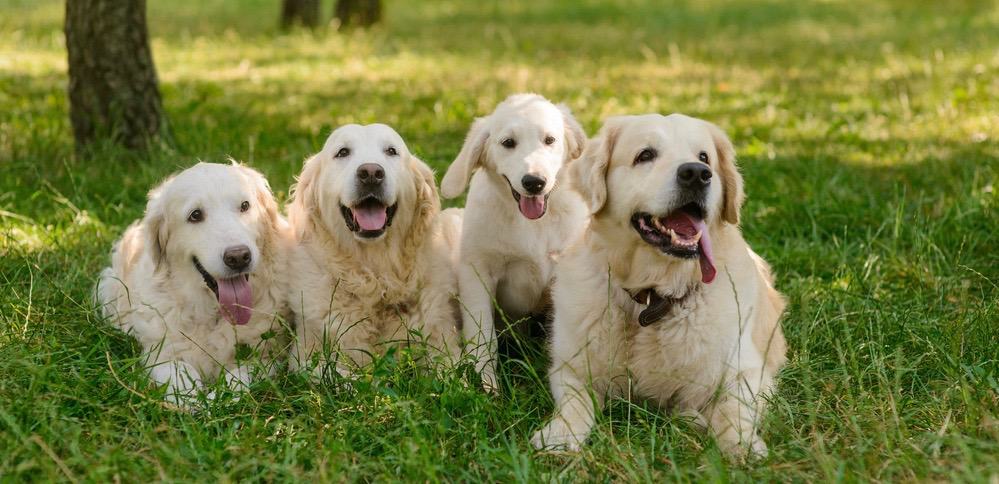
By keeping him healthy and active, you will help keep your friend around for longer. Also, make sure to keep up with any routine vet visits to look out for any illnesses that can be prevented.
How Much Does It Cost To Own A Great Pyrenees?
The cost of adopting a Great Pyrenees will depend on whether you are getting one from a breeder or a shelter. That cost is not a constant.
You can get an idea of how much it will cost to own one, however. In the first year of your dog’s life, you can expect to pay about $3,000, depending on whether you are spaying or neutering your pup.
After the first year, the care of your dog should cost around $2,200 a year, which includes food, medical costs, grooming expenses, and any other odds and ends.
How To Safely Manage Growth Of Your Great Pyrenees
To safely manage the growth of your Great Pyrenees, you will need to make sure that you are following his growth regularly.
Following the Great Pyrenees weight chart will help you know what to expect with your dog and help make sure that he is growing at the right pace.

Beyond watching the growth chart, you will need to ensure that you are feeding your dog the right food. You should also make sure that your dog is getting plenty of exercise, whether you are taking him on walks, to the dog park, or even just on playdates with other dogs.
Additionally, having routine checks with your vet will also make sure that your dog is growing well and very healthy. You will also want to make sure that your dog is properly groomed regularly, especially since these dogs have a lot of fur to take care of.
Great Pyrenees Genetics And Common Health Problems
Like all purebred dogs, Great Pyrenees are prone to certain health conditions. Luckily, they are typically pretty minor. Genetic conditions that your dog might inherit include entropion, which is an eye condition, skin conditions, and might even have hip dysplasia.
Sometimes, the dogs might develop other conditions, like osteosarcoma, which is a kind of bone cancer. Regardless, regular visits with the vet can help you identify any of these conditions and treat them before they become a problem.
If your dog is at risk of any of these conditions, your vet might recommend that you come in more frequently for checkups.


